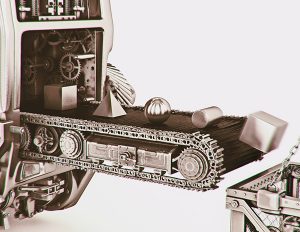
Copyright law originated with the printed word and many feel that it most easily and accurately applies when dealing with written works. The digital world has opened new avenues to creators, however, and the concept of copying is expanding from just paper printouts and document scans. Where a digital file of a book, a scan of a book, and a physical copy of a book are usually all considered equivocal copies by copyright law, the same cannot always be said in the world of 3D printing. Consider an example of a hammer. The designer of the hammer adds an inventive grip that will make it easier to hold, he adjusts the size of the handle in proportion to the head. His electronic design is copyright to him as soon as he saves it or marks it down. But what about a 3D printed rendering of that design?
Copyright does not protect useful articles, like chairs and hammers that have an intrinsic utilitarian function, except for the separable and purely creative elements that may be found on the items (like a design printed on the hammer handle). So, while the design of the hammer would be protected by copyright, copyright would not protect the actual hammer from being scanned, copied, and reproduced because it is a useful object. The library’s copyright guide has a list of questions to ask yourself before proceeding with a 3D scan to 3D print project, and I highly recommend a couple of white papers from Michael Weinberg that discuss copyright and licenses of 3D printed objects:
3 Steps for Licens ing Your 3D Printed Stuff -Michael Weinberg’s white paper that seeks to explain the licensing and copyright status of 3D printed items.
What’s the Deal with Copyright and 3D Printing? – A white paper by Michael Weinberg that explores how copyright is applied to 3D objects.
Just remember: while copyright may not protect useful items, patent law might!